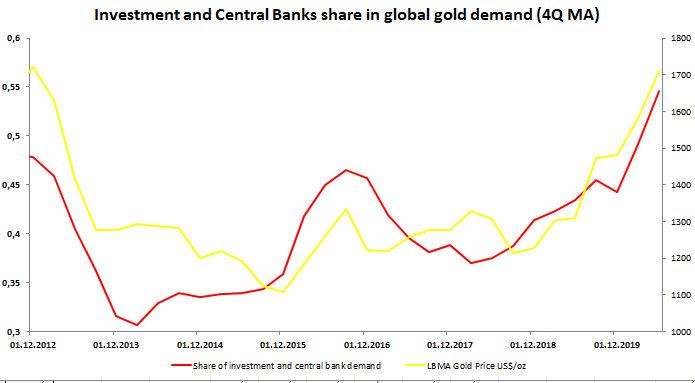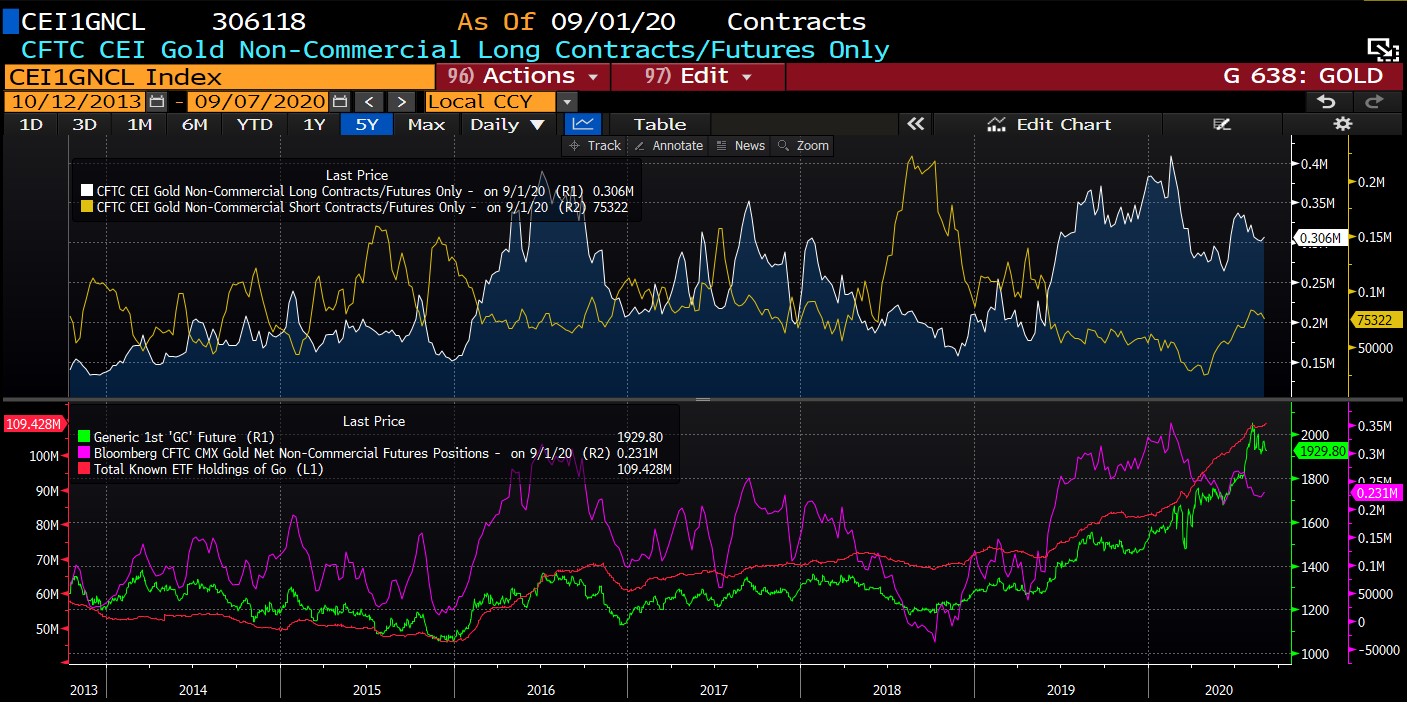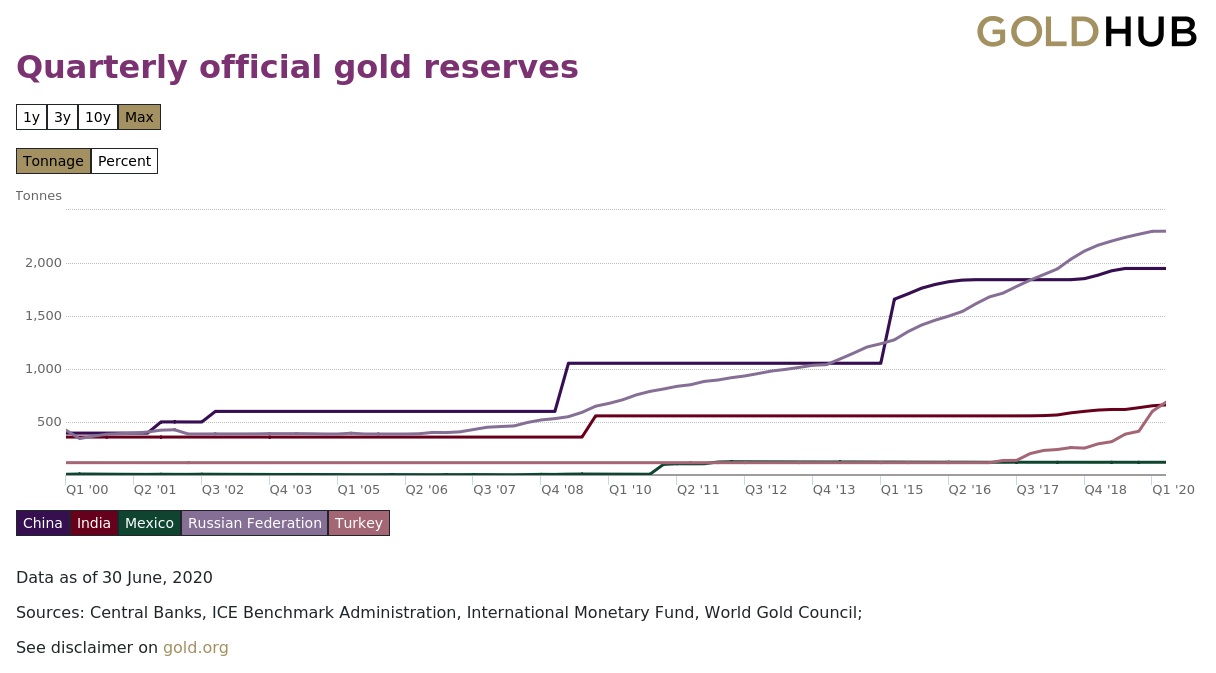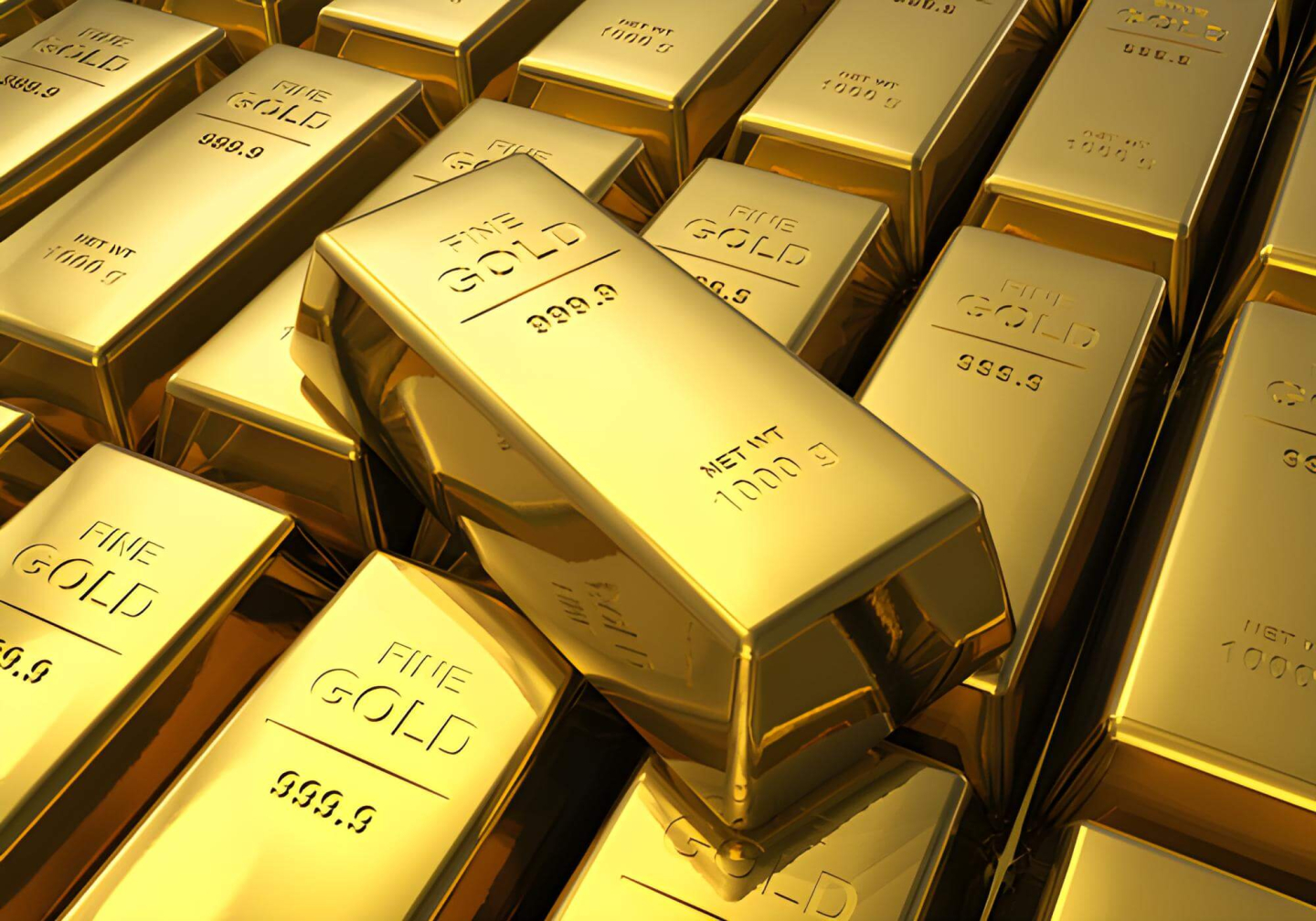The gold market collapsed in the second week of August. The price plunged from its all-time high by around $ 215 per ounce, just over 10%. Gold has obviously partially recovered, and broke above $ 1,900 an ounce, but has been consolidating since the second half of August, having struggled to return above $ 2,000 an ounce. Will gold rise to even higher levels this year?
The latest media campaign related to investments in the gold market could be a warning signal for investors. On the other hand, many commercial banks and financial institutions indicate that gold prices should rise in the long term. Goldman sees gold well above $ 2,000 an ounce at the end of this year, Citigroup sees gold at around $ 2,300 an ounce in the first half of next year, and JP Morgan sees gold at around $ 3,000 an ounce in the next two to three years. However, there are also forecasts according to which the price of gold will increase to $5,000 and even to $10,000 per ounce. At the same time, those analysts' indicate that the level of $10,000 will be the fall of the US dollar as a reserve currency and the world will turn, e.g. towards the Swiss franc. Of course, such scenarios are still a long way off, but it is worth considering what will potentially cause further increases in gold prices now and in the future.
Investment demand and central banks
We pointed out many times last year and this year that a significant rebound in investment demand, mainly from ETFs and central banks, would lead to strong and long-term price increases. Of course, the pandemic led to a significant acceleration of the whole process and at the same time added another factor in the form of a strong monetary easing by central banks. The scale of easing is now significantly greater than during the previous financial crisis. The strong QE program in 2008-2011 led to a significant increase in the price of gold. At a time when speculation about higher gold prices appeared, and in particular since 2014, gold began to fall strongly. Currently, it does not seem that in the next few years there will be talks regarding potential price increases and there will be more and more money on the market. Therefore, the foundations for further price increases are quite strong.
 The share of investment and central banks demand began to rebound from the second half of 2017. Currently, this share is approx. 55%, the highest since 2012, when central banks became net buyers (previously, they generally sold gold). The high share of institutions and investments in demand must be maintained if prices are to continue to rise. Source: WGC, XTB
The share of investment and central banks demand began to rebound from the second half of 2017. Currently, this share is approx. 55%, the highest since 2012, when central banks became net buyers (previously, they generally sold gold). The high share of institutions and investments in demand must be maintained if prices are to continue to rise. Source: WGC, XTB
Demand stagnation
This year is quite special in terms of monetary policy. It would seem that in the face of high inflation, central banks, especially those in emerging countries, will rush to buy gold. This year, central banks have so far purchased 388 tonnes of gold. This is roughly half of what the banks bought last year. However, the details show that the vast majority of purchases come from Turkey. Additionally, about 170 tons of demand from Turkey comes from commercial banks. The World Gold Council treats gold held by commercial banks as national reserves. These banks hold gold as required reserves.
It is worth noting that banks from countries such as Russia (one of the largest purchases, about 20 tons), India and China have basically stopped buying. It may turn out that at this point gold is simply too expensive to build up more reserves. On the other hand, after a temporary break, ETFs started to build further reserves again. The key to this is of course the continued inflow of capital into the funds, which should be sustained by maintaining low real interest rates.
 ETFs started buying gold again. However, these gains are not as strong as before. Source: Bloomberg
ETFs started buying gold again. However, these gains are not as strong as before. Source: Bloomberg
 This year, only Turkey buys gold. It is worth noting, however, that approx. half of the demand from Turkey comes from commercial bank reserves. Source: WGC
This year, only Turkey buys gold. It is worth noting, however, that approx. half of the demand from Turkey comes from commercial bank reserves. Source: WGC
 In the short term, we can observe a consolidation on the EURUSD and TNOTE, which also translated into a consolidation on the gold market. Only strong and clear trends on both instruments could stimulate gold to further larger moves. It is worth noting that an reverse head and shoulders formation appeared on the TNOTE instrument. Meanwhile, in the gold chart we are dealing with a symmetrical triangle. Source: xStation5
In the short term, we can observe a consolidation on the EURUSD and TNOTE, which also translated into a consolidation on the gold market. Only strong and clear trends on both instruments could stimulate gold to further larger moves. It is worth noting that an reverse head and shoulders formation appeared on the TNOTE instrument. Meanwhile, in the gold chart we are dealing with a symmetrical triangle. Source: xStation5A kakaó korlátozottan reagált a gyengébb európai őrlési adatokra
Technikai elemzés: Az arany árfolyama a rekordmagasságról zuhan🔔
A kávé ára 5%-kal emelkedett, átlépte a 400 cent/font határt
Reggeli összefoglaló (14.10.2025)
Ezen tartalmat az XTB S.A. készítette, amelynek székhelye Varsóban található a következő címen, Prosta 67, 00-838 Varsó, Lengyelország (KRS szám: 0000217580), és a lengyel pénzügyi hatóság (KNF) felügyeli (sz. DDM-M-4021-57-1/2005). Ezen tartalom a 2014/65/EU irányelvének, ami az Európai Parlament és a Tanács 2014. május 15-i határozata a pénzügyi eszközök piacairól , 24. cikkének (3) bekezdése , valamint a 2002/92 / EK irányelv és a 2011/61 / EU irányelv (MiFID II) szerint marketingkommunikációnak minősül, továbbá nem minősül befektetési tanácsadásnak vagy befektetési kutatásnak. A marketingkommunikáció nem befektetési ajánlás vagy információ, amely befektetési stratégiát javasol a következő rendeleteknek megfelelően, Az Európai Parlament és a Tanács 596/2014 / EU rendelete (2014. április 16.) a piaci visszaélésekről (a piaci visszaélésekről szóló rendelet), valamint a 2003/6 / EK európai parlamenti és tanácsi irányelv és a 2003/124 / EK bizottsági irányelvek hatályon kívül helyezéséről / EK, 2003/125 / EK és 2004/72 / EK, valamint az (EU) 2016/958 bizottsági felhatalmazáson alapuló rendelet (2016. március 9.) az 596/2014 / EU európai parlamenti és tanácsi rendeletnek a szabályozási technikai szabályozás tekintetében történő kiegészítéséről a befektetési ajánlások vagy a befektetési stratégiát javasló vagy javasló egyéb információk objektív bemutatására, valamint az egyes érdekek vagy összeférhetetlenség utáni jelek nyilvánosságra hozatalának technikai szabályaira vonatkozó szabványok vagy egyéb tanácsadás, ideértve a befektetési tanácsadást is, az A pénzügyi eszközök kereskedelméről szóló, 2005. július 29-i törvény (azaz a 2019. évi Lap, módosított 875 tétel). Ezen marketingkommunikáció a legnagyobb gondossággal, tárgyilagossággal készült, bemutatja azokat a tényeket, amelyek a szerző számára a készítés időpontjában ismertek voltak , valamint mindenféle értékelési elemtől mentes. A marketingkommunikáció az Ügyfél igényeinek, az egyéni pénzügyi helyzetének figyelembevétele nélkül készül, és semmilyen módon nem terjeszt elő befektetési stratégiát. A marketingkommunikáció nem minősül semmilyen pénzügyi eszköz eladási, felajánlási, feliratkozási, vásárlási felhívásának, hirdetésének vagy promóciójának. Az XTB S.A. nem vállal felelősséget az Ügyfél ezen marketingkommunikációban foglalt információk alapján tett cselekedeteiért vagy mulasztásaiért, különösen a pénzügyi eszközök megszerzéséért vagy elidegenítéséért. Abban az esetben, ha a marketingkommunikáció bármilyen információt tartalmaz az abban megjelölt pénzügyi eszközökkel kapcsolatos eredményekről, azok nem jelentenek garanciát vagy előrejelzést a jövőbeli eredményekkel kapcsolatban.


